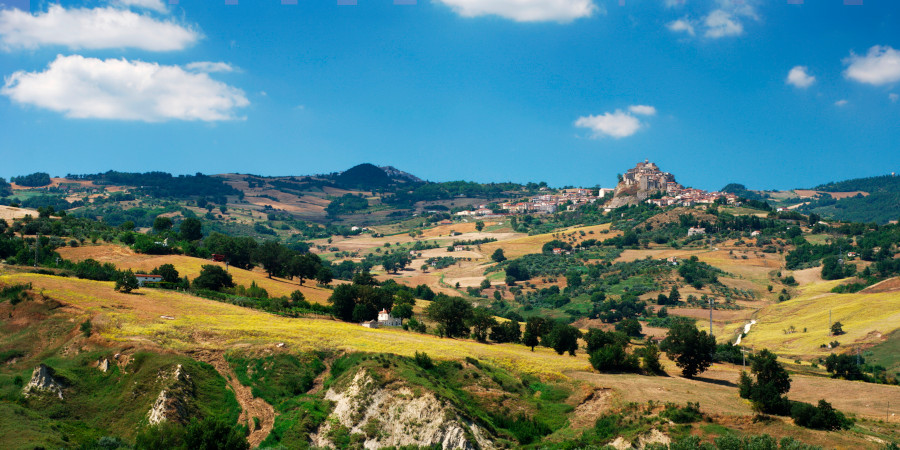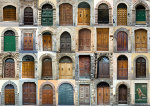The Charm and Challenge of Italian Countryside Homes: High Prices and Limited Supply
Giulia Rossi, Monday, 8 January 2024

Nestled amidst the serene landscapes and historic vistas of the Italian countryside lies a real estate paradox. Homes here, ranging from quaintly aged to near dilapidation, fetch surprisingly steep prices. This phenomenon, deeply woven into the cultural, economic, and regulatory tapestry, is largely driven by a scarcity of supply. This article explores the myriad factors contributing to this unique market, enriched with local insights and comparative glimpses into similar global trends.
Comparatively, regions like the French Provence or Spanish Andalusia share similar market dynamics, where history and beauty inflate real estate values.
The article concludes with a forward-looking view. As urbanization continues, these countryside homes might become even rarer, potentially increasing their value. For potential buyers, experts suggest thorough research and legal counsel, especially when considering restoration projects.
In summary, the high prices of homes in the Italian countryside result from a confluence of factors where limited supply, owing to various regulatory and cultural reasons, plays a significant role. These homes are more than living spaces; they are fragments of Italian heritage and lifestyle, rare and coveted, making them prized possessions in the real estate world.
Our comprehensive guide is the perfect companion if you are considering moving to Italy or are already living there. Learn all about buying a house, mastering the Italian language, finding a job, experiencing the culture and discovering tourist attractions. With this guide, you'll have all the information you need to live successfully in Italy. Read on now to discover it all!

Nestled amidst the serene landscapes and historic vistas of the Italian countryside lies a real estate paradox. Homes here, ranging from quaintly aged to near dilapidation, fetch surprisingly steep prices. This phenomenon, deeply woven into the cultural, economic, and regulatory tapestry, is largely driven by a scarcity of supply. This article explores the myriad factors contributing to this unique market, enriched with local insights and comparative glimpses into similar global trends.
- Cultural and Historical Significance: Beyond mere structures, these countryside homes are living chronicles of Italy's rich heritage. As Francesco Rossi, a local real estate agent, puts it, "Each of these homes tells a story, connecting us to centuries past." This connection imbues the properties with extraordinary value, catapulting them beyond standard market rates.
- Scenic and Lifestyle Appeal: The allure of sprawling vineyards and verdant olive groves, coupled with the tranquility far from urban tumult, magnetizes those seeking serenity. Maria Bianchi, a homeowner, shares, “Living here is like being in a perpetual state of vacation, amidst nature and history.”
- Limited Supply – The Core Issue:
- Preservation Laws: Strict measures to safeguard historical integrity limit new constructions. While preserving the area's charm, these laws constrict home availability.
- Natural Landscape Protections: Legislation safeguarding scenic beauty further curtails new developments.
- Zoning Restrictions: Protecting agricultural land also limits residential expansion.
- Complex Land Ownership: Traditional landholding patterns and a general hesitancy to sell compound this scarcity.
- Investment and Tourism Demand: These homes, rare and appealing to tourists and investors, see high demand. They are often viewed as profitable vacation rentals or assets appreciating over time.
- Restoration Potential: Despite age or wear, many homes are coveted for their restoration possibilities. The blend of ancient architecture with modern conveniences is a prestigious undertaking.
- Bureaucratic and Legal Aspects: The intricacies in purchasing and renovating, particularly historical properties, inflate costs, reflected in asking prices.
Comparatively, regions like the French Provence or Spanish Andalusia share similar market dynamics, where history and beauty inflate real estate values.
The article concludes with a forward-looking view. As urbanization continues, these countryside homes might become even rarer, potentially increasing their value. For potential buyers, experts suggest thorough research and legal counsel, especially when considering restoration projects.
In summary, the high prices of homes in the Italian countryside result from a confluence of factors where limited supply, owing to various regulatory and cultural reasons, plays a significant role. These homes are more than living spaces; they are fragments of Italian heritage and lifestyle, rare and coveted, making them prized possessions in the real estate world.
Links
Our comprehensive guide is the perfect companion if you are considering moving to Italy or are already living there. Learn all about buying a house, mastering the Italian language, finding a job, experiencing the culture and discovering tourist attractions. With this guide, you'll have all the information you need to live successfully in Italy. Read on now to discover it all!

All types of Italian property for sale by private sellers and estate agents. Find your perfect houses, farmhouses or apartment in all regions of Italy including Liguria, Tuscany, Umbria and Marche.
 Explore the Italian Property Market: A 2024 Guide for UK Residents - This article provides a detailed overview of the essential factors to consider
when buying property in Italy in 2024. It covers economic growth, housing market trends, mortgage interest rates, judicial auctions, rental yields, and
upcoming legal and regulatory changes, offering valuable insights for potential investors eyeing a second home in vibrant cities like Rome, Milan, or
Florence
Explore the Italian Property Market: A 2024 Guide for UK Residents - This article provides a detailed overview of the essential factors to consider
when buying property in Italy in 2024. It covers economic growth, housing market trends, mortgage interest rates, judicial auctions, rental yields, and
upcoming legal and regulatory changes, offering valuable insights for potential investors eyeing a second home in vibrant cities like Rome, Milan, or
Florence
More articles